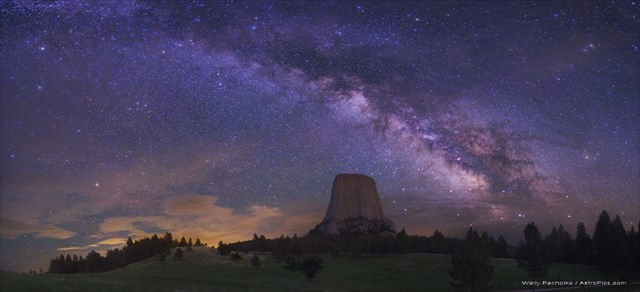Zyx the Alien – Part 6, Celestial Sphere Mystery Cache
Zyx the Alien – Part 6, Celestial Sphere
-
Difficulty:
-

-
Terrain:
-

Size:  (micro)
(micro)
Please note Use of geocaching.com services is subject to the terms and conditions
in our disclaimer.
This is the sixth cache in a series of caches starring . . . Zyx the alien.
In this one, Zyx will travel even further from the earth in his search for caches.
If you missed the explanation about Zyx and PlanetaryCaching from Part 1 , here it is again.
Zyx is an alien. He has: a really cool flying saucer, a wild sense of adventure, a mischievous sense of humor, a PPS receiver, and a love of the sport of PlanetaryCaching.
PlanetaryCaching resembles geocaching in many ways, except that it can cover a wide range of locations and it uses Z-Beacons instead of ordinary cache containers. A Z-Beacon is capable of sending controlled signals to Zyx’s PPS (Planetary Positioning System) receiver. When Zyx flies close enough to a hidden Z-Beacon, his receiver picks up a signal and displays a message. Sometimes the message says, It’s here, but sometimes it just gives a hint or partial information.
In this cache, and all the caches in this series, you will fly Zyx to virtual locations, and you will be shown the reading on his PPS receiver.
How do you control a flying saucer? Good question. Actually, it is quite easy. You just enter a coordinate (latitude and longitude) into the FSCP, Flying Saucer Control Panel (also known as a geochecker), and the saucer will immediately take you and Zyx to that location. It can be anywhere on the planet (OR OFF!). Once there, the PPS will display the message from the Z-Beacon. Of course, if there is no Z-Beacon in range, it will just tell you to try again.

In this puzzle, you will fly Zyx’s flying saucer to interesting celestial objects deep in space. To do that you will use the Celestial Coordinate System that locates objects on an imaginary sphere centered around the Earth. Of course, the actual stars and galaxies are at widely differing distances, but that distance can be ignored for our purposes here. Zyx’s flying saucer has an autopilot that will travel the correct distance as long as you provide the direction. Also, since the flying saucer and the Z-Beacon signals travel through the sub-ether, they can travel to anywhere in the universe instantaneously. There is none of that messy relativity to slow them down.
The Celestial Coordinate system is related to latitude and longitude on Earth, but uses an adjusted system of coordinates. There are many good explanations of this on the Web. I like the one at: Understanding Celestial Coordinates. Here is a brief summary focusing on how you can use Celestial Coordinates in the Flying Saucer Control Panel (FSCP) of Zyx’s amazing flying saucer.
Astronomers measure locations in Right Ascension (RA) and Declination (Dec). In some sense, they are like Earth longitude and latitude captured at a moment in time (the Vernal Equinox) and then projected outward to an imaginary sphere. Here are some differences.
- Declination: Declination is in degrees and measures the angle from the celestial equator (which is a circle directly above Earth’s equator). It runs from +90 degrees (north pole near the North Star) to -90 degrees (south pole), so it corresponds closely to latitude. Just enter the Declination value directly into the FSCP for latitude.
- Right Ascension: Right Ascension is trickier. First it uses angular units of Hours, Minutes, and Seconds. Think of the complete circle around the celestial equator as being divided into 24 hours – in this usage an RA hour is a measure of angle equal to 15 degrees (360/24 = 15). An RA hour is divided into 60 RA minutes, and an RA minute is divided into 60 RA seconds. Although these may seem like strange units for measuring angles, they are actually very convenient for predicting when a given space object will appear overhead. For a different (and maybe easier) method to convert and center the RA, see my note posted on 5/23/14.
- To convert RA hours to arc degrees, multiply by 15
- To convert RA minutes to arc minutes, multiply by 15
- To convert RA seconds to arc seconds, multiply by 15
- OR to convert RA seconds to arc minutes, divide by 4 (RA s x 15 / 60)
- Centering: RA hours run from 0 to 24 (centered on 12 hours), and are always positive. Longitude runs from -180 degrees to +180 degrees (centered on 0 degrees). This means that once you convert from RA hours/minutes/seconds to Longitude degrees/minutes, you have to re-center the coordinates by subtracting 180 degrees (see the example below using Sirius).
- Epoch: The Celestial Coordinate system changes slowly over time. This puzzle (and most references you are likely to see) use the Epoch designated 2000 or J2000. Ignore anything that refers to Epoch 1950 or 1900.
So, in summary, use Declination as latitude and use RA as longitude after you multiply by 15 to convert to degrees and subtract 180 to center it. And use Epoch J2000.
(I initially wrote a lot more information about Celestial Coordinates, but I decided to leave it out because this listing is already running long. Look it up on the Web if you are interested.)
Let’s try an example – Using a bright star as an example (none of the actual puzzle locations is a star). Let’s say the clue is, “Boxer, Shepherd, or Hot.” After a little thought you come up with “Dog.” You discover there is a bright star, Sirius, which is known as the “Dog Star.” In the Epoch 2000 coordinates you should be using, it is listed as RA = 06h 45m 08.9173s, and Dec = −16° 42′ 58.017″
Converting the Declination is straightforward; you just have to convert the seconds to minutes. 58.017 / 60 = 0.967 And since it is a negative Declination you get South 16° 42.967'
Converting the RA For a different (and maybe easier) method to convert and center the RA, see my note posted on 5/23/14.
- Convert the RA hours to degrees: 6h x 15 = 90 degrees
- Convert the RA minutes to arc minutes: 45m x 15 = 675 minutes arc = 11 degrees 15 minutes arc
- Convert the RA seconds to arc minutes: 8.9173s x 15 / 60 = 2.229325 minutes arc
- Total the units: 101 degrees 17.229 minutes arc
- And finally to re-center the coordinates, we subtract 180 degrees: 101:17.229 -180 = -78 degrees 42.771 minutes arc (negative is West)
So, to fly to Sirius, you would enter S 16 42.967 W 78 42.771 into the FSCP.

Now for the puzzle…
You will fly great distances around the universe visiting some interesting deep sky objects. The FSCP will automatically switch into Celestial Coordinate mode when you are flying into space. For each stage of the puzzle, you will get a hint to the next location. The hint may be a play on words as in the “Dog Star” example. Also at each stage you will collect numerical clues for the final stage. The clues will be designated A through F, where A < B < C < D < E < F. Start by flying to the posted coordinates on Earth.
Here is the Flying Saucer Control Panel:

This is a puzzle cache. It is not at the listed location. The hidden container (Z-Beacon) is similar to the one in Part 1
The FIRST TO FIND this cache was theLadyBee and blandestk. Congratulations!
Some of the ideas in this series were inspired by VPPLAYER’s excellent Missed DiRectiθn series in Dayton.
The complete Zyx series of puzzle caches is:
The ZYX GRAND TOUR HALL OF FAME awaits any cacher who logs all eight finds PLUS the Bonus options on Zyx #3 and #5. The members are: VPPLAYER (first), TommyGator, kaleidodad, samleelong21, Fat Chuck, 4 boys explore, Robbins Family, ...
NOTE: THE FINAL LOCATION CHANGED ON 08/06/2023
Additional Hints
(Decrypt)
Chmmyr: Rnpu qrrc fcnpr bowrpg jvyy or n tnynkl be arohyn, abg n fgne be pbafgryyngvba.
Chmmyr: Gur beqre bs gur qrrc fxl ybpngvbaf (N gb S) pbzrf sebz n jryy-xabja yvfg.